Eimmart: Aeneas discovers the white sow
Annotations
Aeneas, with his entourage, discovers the sow with the piglets in the bushes near the Tiber River.
Aeneas, mit Gefolge, entdeckt im Gebüsch in der Nähe des Tibers die Sau mit den Frischlingen. (Suerbaum)
Engraving from a German children’s picture-book version of the Aeneid by G. J. Lang and G. C. Eimmart, “A tapestry of Roman virtues as seen in Vergil’s Aeneas and his brave deeds, rendered in sparkling engravings, as illustrations of the remarkable deeds of antiquity, for the common benefit of noble youth,” (Peplus virtutum Romanarum in Aenea Virgiliano eiusque rebus fortiter gestis, ad maiorem antiquitatis et rerum lucem, communi iuventutis sacratae bono, aere renitens) (Nuremburg: J.L. Buggel, 1688), pl. 36.

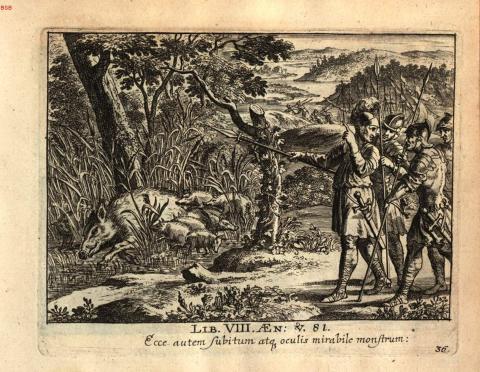

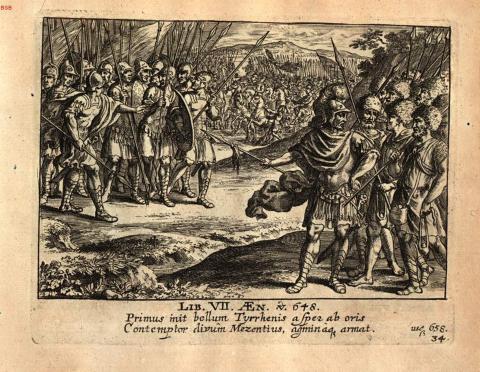
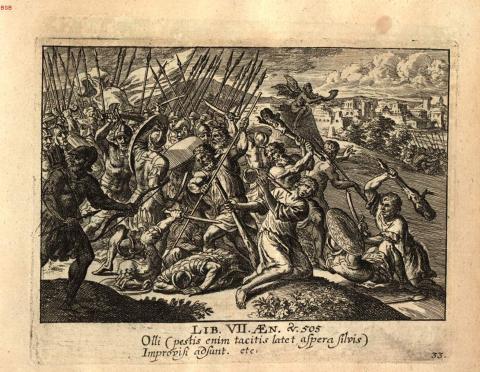
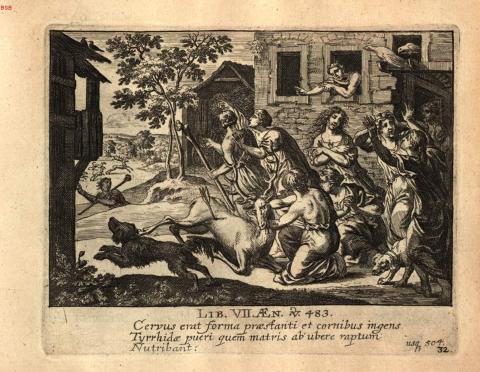
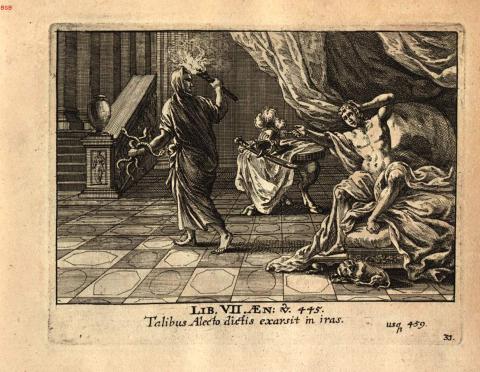
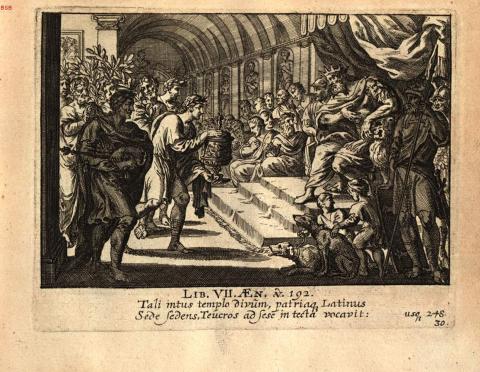
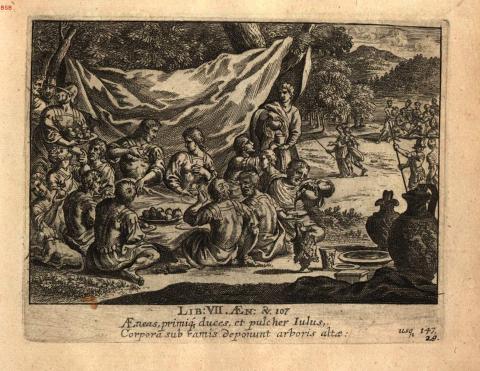


At line 81, while preparing to sail up the river and find Pallanteum, Aeneas discovers the white sow and her thirty piglets prophesied to him by the god Tiberinus. He sacrifices her and her litter to Juno as a peace offering. (Lucy McInerney)